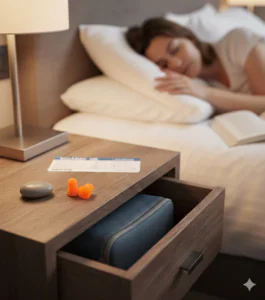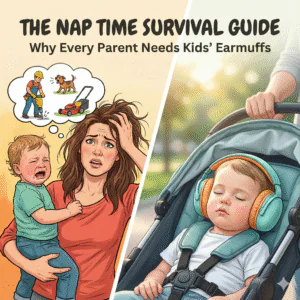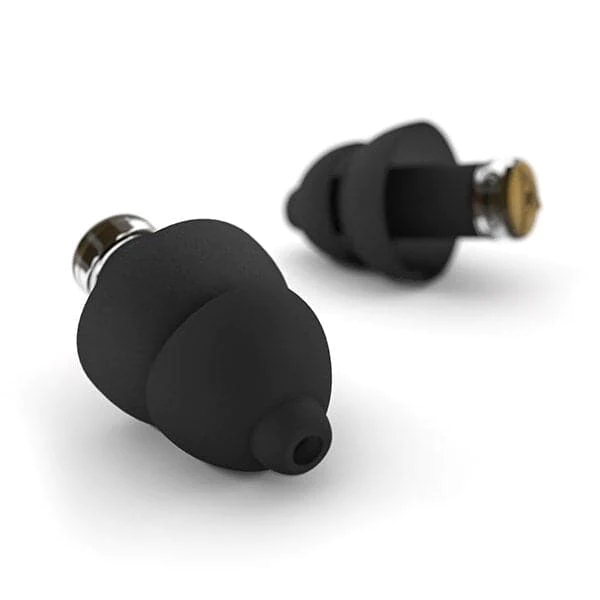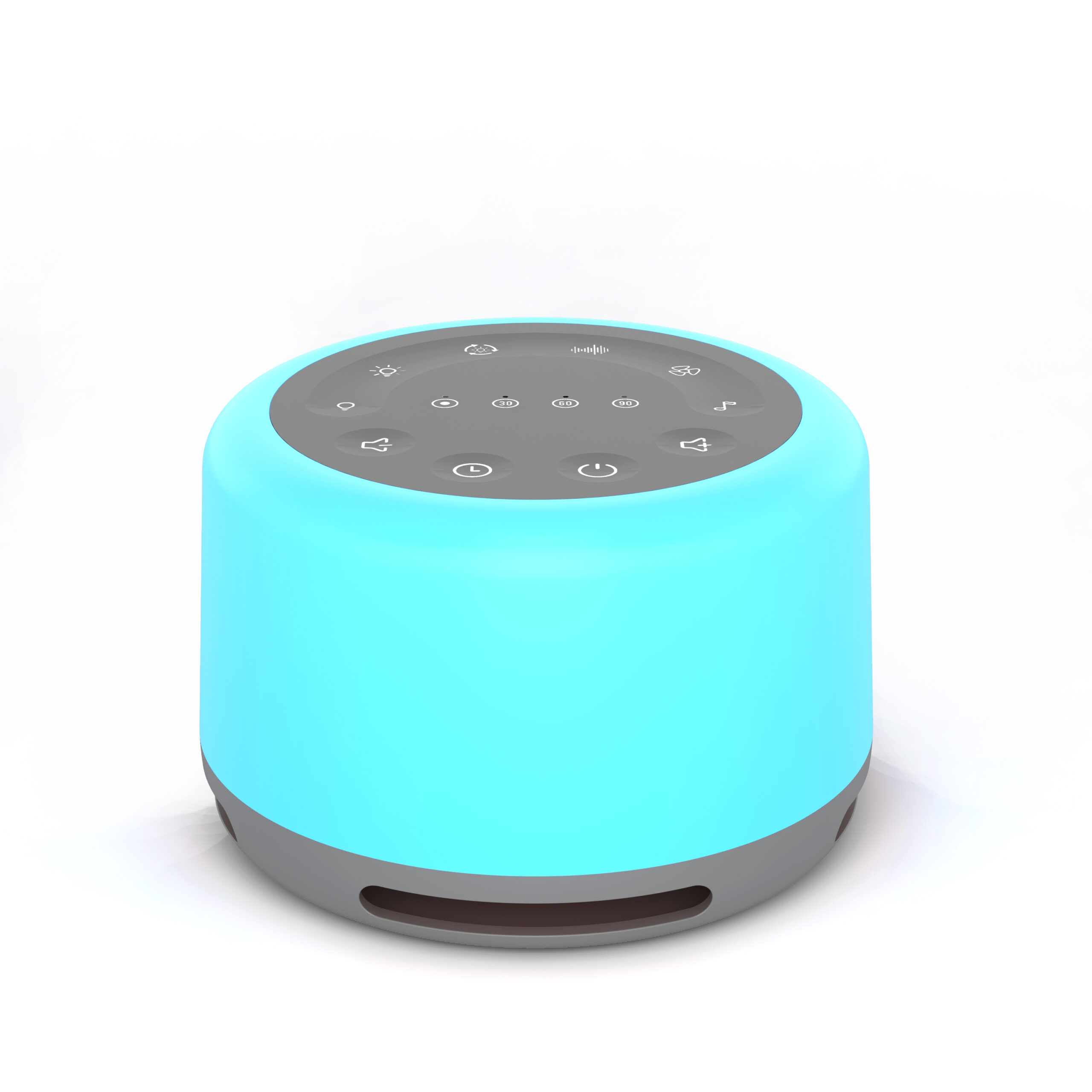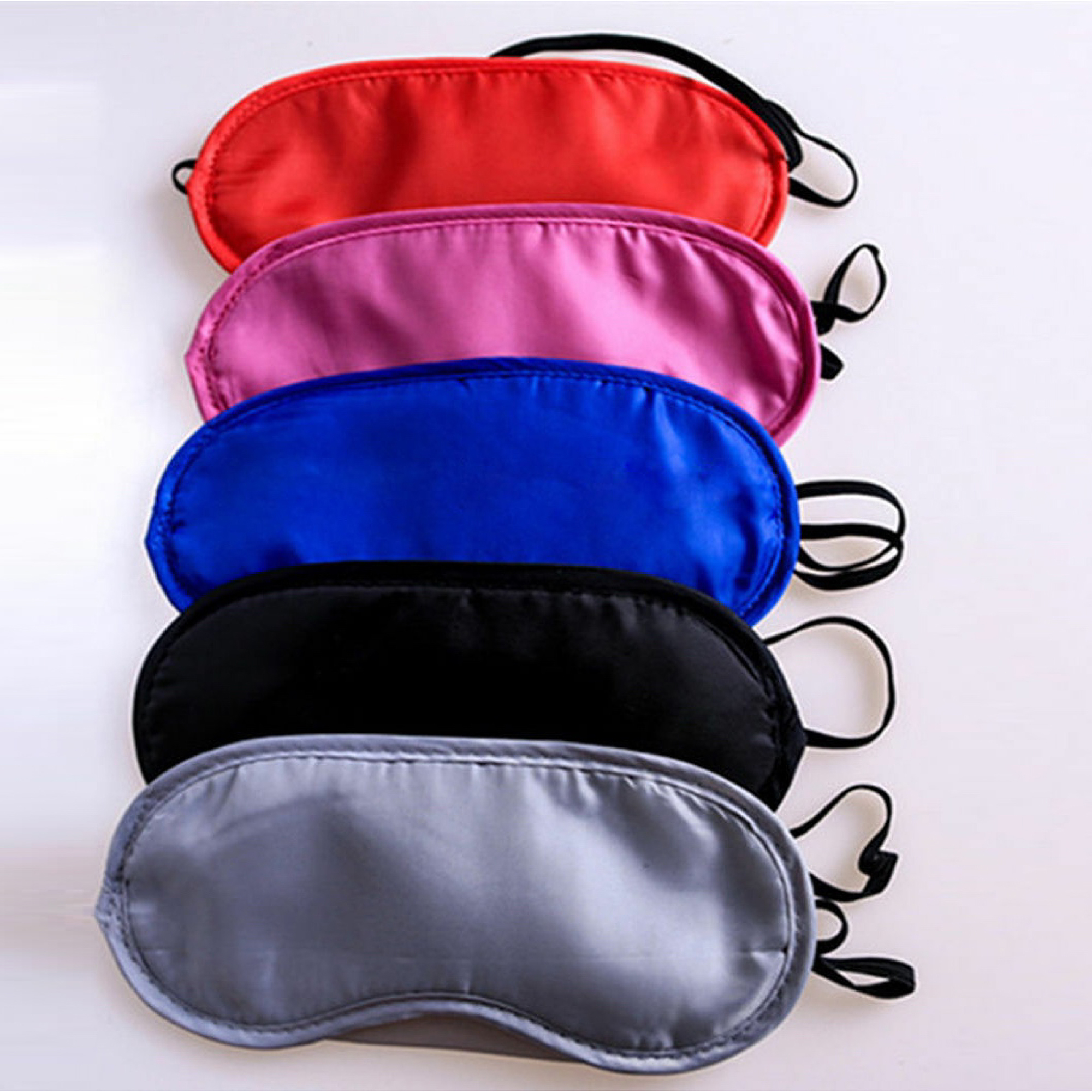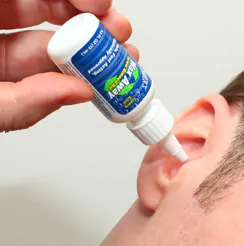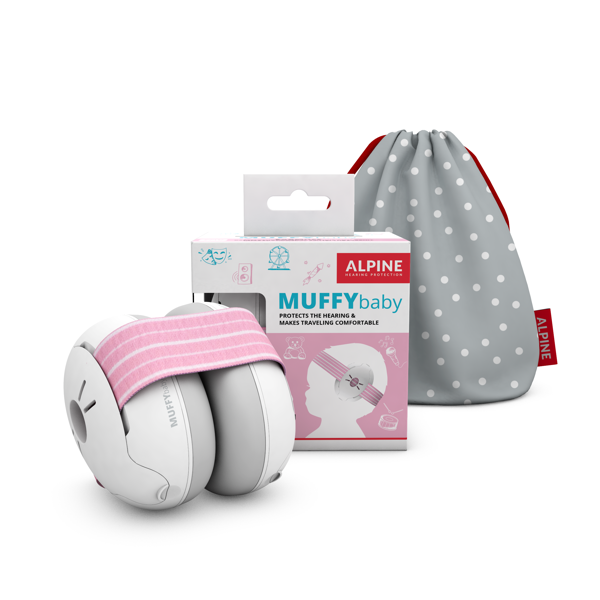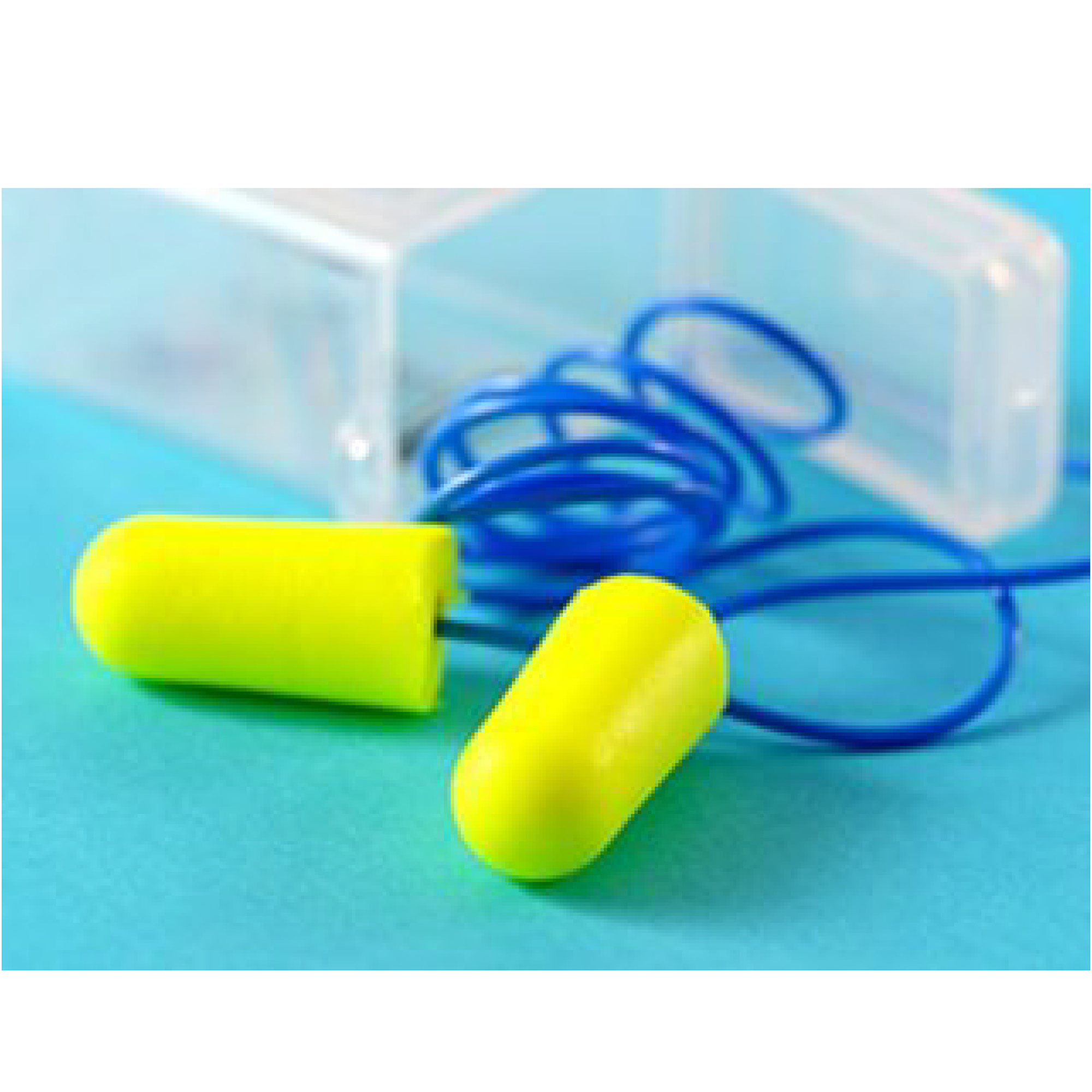Blog
What Type of Earplugs are Best for Sleeping?
- Daniel Hastings
Table of Contents
In our world brimming with noise, nearly 48% of people suffer from sleep disturbances in Australia, with external sounds being a prime culprit. The quest for undisturbed slumber brings many to a simple yet effective solution: the best earplugs for sleeping. These tiny guardians of tranquility offer more than just silence; they provide a sanctuary for the mind and body, allowing us to dive into a deep, restorative sleep.
The unassuming power of earplugs lets you know how these small devices can combat the din of life and transform our sleep quality. From understanding their types and benefits to mastering their use for maximum comfort and effectiveness, we embark on a journey to reclaim the precious gift of peaceful sleep.

Are Earplugs Safe To Use While Sleeping?
As long as you take care of your ears, earplugs don’t cause damage. It is important to make certain that there’s no wax buildup and that they’re not clogged with gunk because this could lead to infection. When you don’t use them properly, though, there are potential side effects. Furthermore, if you’re new to using them – especially if you’re prone to ear problems – it is also a good idea to discuss them with your doctor first.
Some people may prefer other methods of canceling out noise in some cases. We have a great range of alternative products to earplugs for sleeping, including Bluetooth headphones, noise-canceling earbuds, and white noise machines to aid you in achieving a deep and peaceful sleep!

How Do We Choose the Best Earplugs For Sleeping?
Choose your earplug by considering the following factors.
- Check Noise Reduction Rating (NRR).
- Choose comfortable material (foam, silicone, wax).
- Ensure good fit and comfort.
- Look for hypoallergenic options.
- Decide between single-use or reusable.
- Read user reviews.
- Consider extra features (sleep tracking, etc.).
- Compare prices and buy economically.
- Opt for brands with trial or return policies.
3 Different Types of Earplugs For Sleeping
1. Foam
Foam plugs are typically inexpensive and made to expand and adapt to the shape of the ear canal. Finding the right sized earplugs is imperative to blocking sound and for user comfort to wear all night long. We have specially designed Dreamgirl Earplugs smaller earplugs for people with smaller ear canals. Macks Maximum Protection Soft Foam earplugs are more suited to people with larger ear canals and provide maximum noise blocking. You insert the plug by rolling it into a thin cylinder shape. To insert the ear plug, hold it gently for 30-40 seconds as the foam expands to avoid it pushing its way out of place. If it doesn’t feel right, simply remove it and try again until you have the perfect fit.

2. Silicone Putty
This type of plug is also one of the more budget-friendly options for consumers. Mack’s Soft Silicone earplugs are pre-molded to fit the shape of the canal, but size can vary among users. However, since they can be molded, they adjust to fit a variety of ear sizes and are a comfortable option for earplugs for sleep or day.
3. Flanged
Flanged earplugs typically come with two or three webbed rings designed to help the product remain stabilized within the canal, just like Alpine WorkSafe Reusable Earplugs. According to Medical Hearing Solutions, this also allows them to provide multiple barriers against outside noise.
Sometimes, these are available on a cord as well, which is super handy if you need earplugs for work around the house, doing a bit of DIY, or gardening. Another advantage is these can be washed and, therefore, are reusable.

How To Safely Use Earplugs For Sleeping?
Follow these instructions to use your earplugs safely while sleeping.
1. Clean and Dry
You should make sure your earplugs are always clean and dry before each use. Too much moisture can harbor bacteria growth, which could lead to an infection. Plus, regularly cleaning your reusable earplugs will further prevent the accumulation of bacteria, keeping your ears nice and healthy. Use the protective case that comes with your earplugs and keep them out of direct sunlight.
Suppose you suffer from water staying in your ear canals after swimming or showering. In that case, we highly recommend the use of a Macks Ear Dryer, invented by an Ear Nose and throat Specialist, to safely and effectively dry the ear canal in about one minute. Alternatively, you can use Mack Dry N Clear to help get the trapped water out of your ears!

2. Discard Disposable Plugs
Earplugs, such as foam and soft silicone putty, are considered disposable earplugs for sleep. Whilst they can be worn more than once, it is not recommended to keep using them once they become too soiled. Putting them in your ears once they have a build-up of wax could make you more susceptible to infection. Therefore, if you use disposable plugs, discard them after each couple of wears and replace them with a new pair. This will ensure you keep any nasties at bay and ensure that your earplugs are doing their job and blocking out the degree of decibels they are intended to.

3. Choose One That Fit Comfortably
There are different types of earplugs, and some may fit your ears better than others. For example, you may find that flange earplugs feel more comfortable than silicone putty or foam. Ensure the earplugs do not obstruct your ear canal entirely; this could lead to pressure buildup or wax impaction.

4. Insert Them Gently
The ear canal is a delicate area; therefore, you should always be gentle when putting anything in and out of your ears, including plugs. Place them in slowly without trying to push them in too deep. Be just as cautious when taking them out by going slowly until the plug is completely removed.
5. Safe Storage
Where you keep your earplugs when they are not in use is equally important. To prevent moisture buildup or bacteria growth, always store them in a clean and well-ventilated area.

6. Keep Earwax Build Up at Bay
Pro Rinse Earwax Removal Kit is the best way to remove excess earwax. It’s safe and effective!
Doctors warn against using cotton-tipped buds for cleaning the ears because they can damage the ears and eardrum. It’s always a relief to find an effective way of removing earwax. The Pro Rinse Ear Wax Removal Kit makes it easy and safe for you!

FAQs
Is it OK To Wear Earplugs all Night?
Wearing earplugs all night is generally safe for most people, provided the earplugs are comfortable and clean. It’s essential, however, to ensure they are properly inserted and don’t cause any discomfort or pressure in the ear canal.
How Many Hours Can You Wear Earplugs?
Earplugs can be worn for several hours at a time, but it’s recommended not to exceed 8-10 hours continuously. Prolonged use without breaks or proper hygiene can lead to earwax buildup or potential ear infections.
Conclusion
Choosing the appropriate type of earplugs for sleep can considerably improve its quality by ensuring restful sleep without interruption. Foam, silicone, and custom-molded earplugs all have special advantages to suit different tastes and requirements. When using earplugs for sleep, it is vital to put safety and comfort first.
We may get the most out of these sleep aids while reducing any hazards if we use the right procedures and instructions for insertion and removal. In the end, everyone can get a good night’s sleep with the correct earplugs and safe usage habits, which will improve their general health and well-being.
Alternatively, please feel free to reach out to one of our team members at [email protected], who can help suggest something to get a great night’s sleep!
